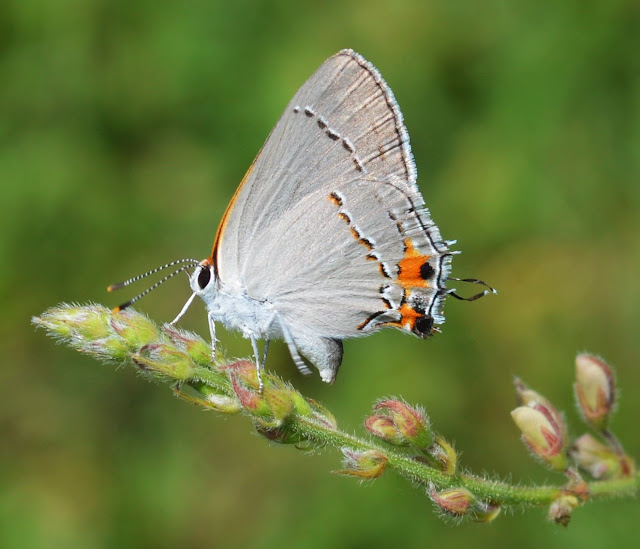 |
| The Susanne Warner Bass Learning Center |
Edwin Warner Park is one of the best places to hike in Nashville.
It is south of Old Hickory Blvd at the intersection of Highway 100
in SW Nashville and has 625 acres of beautiful forested landscape
with 6 great hiking trails.
in SW Nashville and has 625 acres of beautiful forested landscape
with 6 great hiking trails.
Click the sites below for information.
Click here for Information about the Warner Parks
Click here to see a detailed map of Edwin Warner Park
with a description of the hiking trails.
Click here to see a detailed map of Edwin Warner Park
with a description of the hiking trails.
Today, I decided to take a figure 8 double loop.
I took the Nature Loop (yellow), then the Hungry Hawk Trail (purple)
up to the Observation Platform, then down to the Natchez Trace
and back to the Nature Center (see map below).
I took the Nature Loop (yellow), then the Hungry Hawk Trail (purple)
up to the Observation Platform, then down to the Natchez Trace
and back to the Nature Center (see map below).
 |
| This is a small section of the E.Warner Park map.
Click here to see a detailed map of Edwin Warner Park
|
 |
| If you face the Learning Center this little pond ecosystem is to the left, only a few yards away. |
 |
| Broadleaf Arrowhead or Duck Potato Its tuberous roots can be eaten raw or cooked. |
 |
| Arrowhead flowers |
 |
| Minnows swimming beside Spirogyra, an algae. |
 |
| This is the main trailhead located near the pond. |
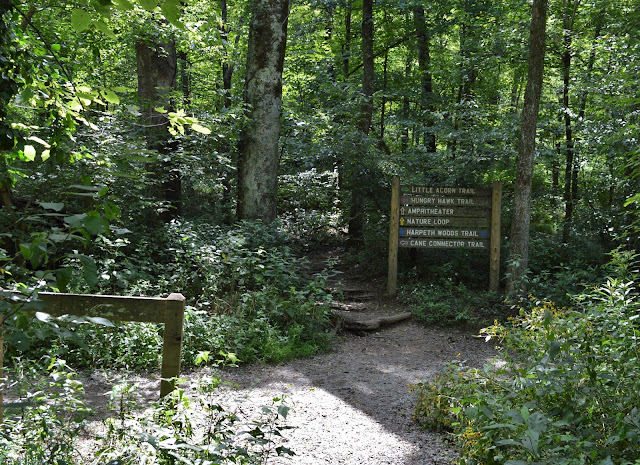 |
| You will soon come to this point where you will cross the Natchez Trace, the main trail which runs along the creek. |
 |
| Turkeytail fungus decomposing the lower part of a small tree trunk. |
Cross the Natchez Trace and get on the Nature Loop,
which has yellow markers (see map).
which has yellow markers (see map).
 |
| Turn right here, just follow the yellow arrows. |
 |
| A Skipper searching for the nectar from a Pale Touch-me-not. |
 |
| Continue on the "yellow trail" and take a short break on the bridge...take a minute to observe and listen. Turning left will put you on the Harpeth Woods Trail, which you can try on another day. |
Click here to see a detailed map of Edwin Warner Park
 |
| The flower of a Leafy Elephant's Foot. |
 |
| Now, you're descending back toward the Natchez Trace. |
 |
| Squirrel with food. |
 |
| Take it nice and slow, looking for plants, animals, and fungi. |
 |
| The small flowers of Snakeroot. A close-up, below. |
 |
| Snakeroot |
 |
| You're winding down to the Trace. |
 |
| Cross this road and continue on the Nature Loop. |
The circle-of-life...dead trees returning to the soil
for the plants to absorb, thanks to the fungi. The fungus is called Turkey Tail. The main part of the fungus is in the wood decomposing it. |
 |
| You're approaching the creek that you crossed earlier. |
 |
| Across the bridge is the Natchez Trace...turn right. |
 |
| This Trace runs parallel to Highway 100, which is to the left. |
 |
| This is where you started. Now, you will make another loop, but it will be on the east side this time, heading toward the Amphitheater (see map). |
 |
| About 200 yards from the sign is this neat little outdoor Amphitheater. |
Just continue the walk and you'll be on the Hungry Hawk Trail,
which goes along field edges (below),
 |
| Gulf Fritillary butterfly! |
 |
| Ironweed |
and a Bird Blind, where you can take a break and try
to identify as many birds as you can.
 |
| You can see the Bird Blind in the background. |
 |
| A view through the Bird Blind. |
 |
| This downed tree is being recycled by the Lichen. |
A lichen is actually two organisms living together.
The algae provides food for the lichen, and the
fungus provides water, plus a home for the algae.
Continue on the Hungry Hawk Trail and you'll come to this point.
Turn right and go up the hill to see the Observation Platform.
 |
| See the map, below. |
Click here to see a detailed map of Edwin Warner Park
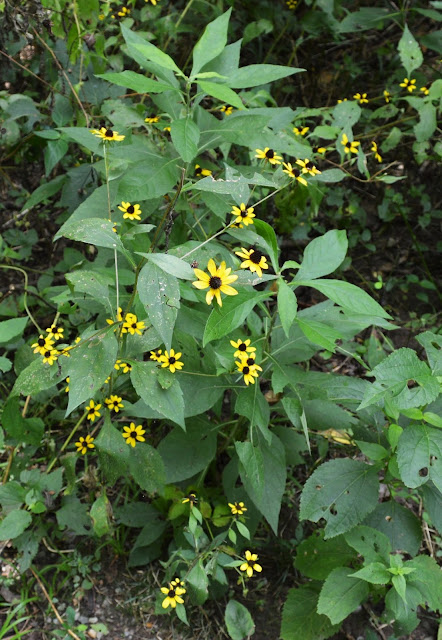 |
| Thin-leaved Coneflower (Rudbeckia triloba) |
 |
| Take a break here to observe and listen. |
 |
| A Desmodium species (Tick Trefoil). |
 |
| Tick Trefoil flowers. (Its seedpods will stick to you like ticks) |
After your break go back down the hill and when you get to
the sign (Observation Platform) just continue straight down the hill
to the Natchez Trace.
 |
| This is the final segment of the Hungry Hawk Trail. At the bottom is the Natchez Trace. |
 |
| White Wingstem |
 |
| The stems of the Wingstem plant have outgrowths, like wings. |
 |
| The flowers of Wingstem. |
 |
| Turn left here and walk on the Trace toward the Nature Center. |
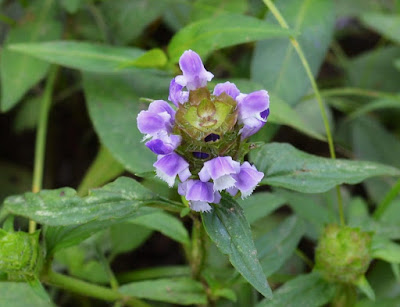 |
| Heal All or Self Heal |
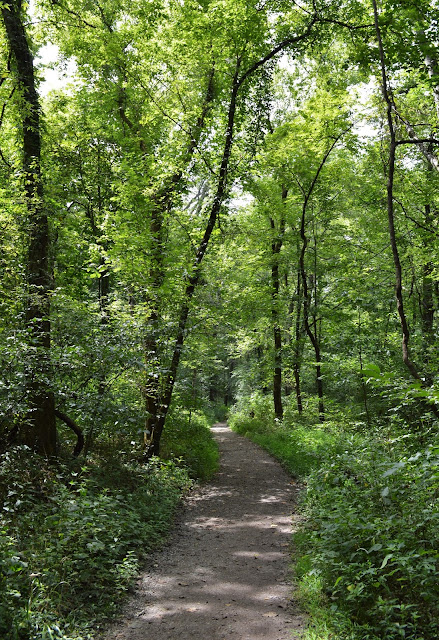 |
| The Trace is in the shadow of the forest canopy the entire time. |
 |
| Japanese Honeysuckle |
 |
| Just turn right here and very shortly you'll reach the trailhead. |
This is an outstanding park; I try to come here as often as I can.
If you want to walk some longer trails try the Harpeth Woods Trail
or go across Old Hickory Blvd to Percy Warner Park.
The Mossy Ridge Trail is a 4.5 mile loop and is rated "moderate"
but some people would call it "strenuous."
Just get out and explore your surroundings!























































